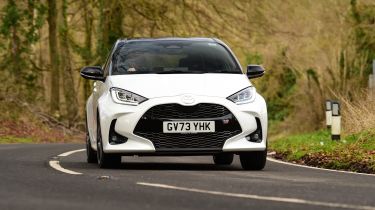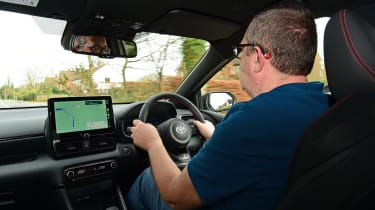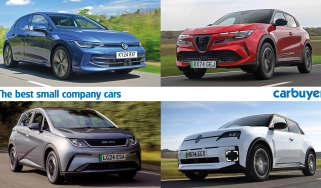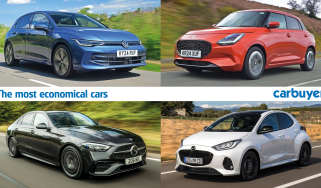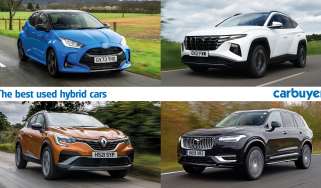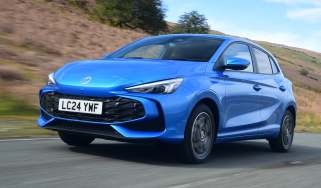Toyota Yaris review - Engines, drive & performance
Its hybrid powertrain is fantastic around town, and only suffers on long motorway stints
The Yaris Hybrid is a great car for town and city driving, with direct, accurate steering and a planted chassis, while the hybrid powertrain spends a lot of time running just on electricity. The CVT automatic gearbox also means there are no gearchanges to worry about, adding to its relaxing feel. It doesn't feel out of its depth on faster roads, proving quite happy on A-roads too, even if its steering can't quite match the class-leading Ford Fiesta.
If there's one type of road the Yaris Hybrid is less well suited to, it's motorways, because here the hybrid system is forced to rely on the petrol engine and it can feel slightly strained at higher speeds. A more powerful model was introduced for 2024, which we’ve now tested, and it does a much better job in this respect. Its higher-powered motor not only makes it feel extra responsive around town, but on motorways refinement is improved, too.
In any case, the standard CVT automatic gearbox means the Toyota Yaris isn’t particularly engaging to drive, so keen drivers may be inclined to look elsewhere.
The Toyota Yaris is very composed to drive, especially on twistier roads where it’s capable when diving in and out of corners, but we’d argue it’s perhaps a harder suspension setup than it needs to be. Softening up the chassis a tad would make the Yaris a better all-rounder. Our GR Sport test car’s larger 18-inch wheels didn’t ride comfort and the smaller 16-inch and 17-inch wheels on all other models in the range, including top-spec Premier Edition, should marginally improve the ride.
Hybrid engine
Both of the hybrid systems offered in the Yaris use a 1.5-litre three-cylinder petrol engine coupled with a small electric motor and battery. The entry-level version has a total output of 114bhp, so the standard Yaris (now known as the Yaris 115) gets from 0-62mph in 9.7 seconds, which is reasonable and about average for this size of car.
More reviews
Post-facelift models from early 2024 are now offered as a second ‘Yaris 130’ model in GR Sport trim and above, gaining a slight power increase to 129bhp, taking just 9.2 seconds to get from 0-62mph as a result.
When we drove the Yaris 130, we found the benefits to the higher-output hybrid system went beyond the bigger power figure. Its electric motor felt punchier at lower speeds in urban environments, while the petrol engine didn’t have to be engaged any more often than in the Yaris 115. The improvements were most notable on the motorway at cruising speed where more electrical assistance meant the car was quieter with less of a drone from the engine. The CVT gearbox doesn’t need to lower its gearing as often to maintain progress so you don’t get the noisy spikes in engine revs. As a result, Toyota’s latest hybrid system is a lot more refined than before and it’s quieter than ever.
That said, the Yaris 130 hybrid system is only available with GR Sport trim and above, making it very expensive – we don’t think the benefits outweigh the extra outlay, so we’d stick to the 115 models.
As with the Toyota Prius, Corolla and C-HR, a CVT automatic gearbox is the only option for the hybrid model. CVT gearboxes don't have the best reputation among keen drivers, but in the Yaris, it performs like a regular automatic in most situations. Thanks to the electrical assistance, there’s less of the slow responses and peaks in engine noise that characterise CVTs, when you floor the accelerator pedal.
CVT gearboxes don't have the best reputation among keen drivers, but in the Yaris, it performs like a regular automatic in most situations. Thanks to the electrical assistance, there’s less of the CVT’s infamous ‘rubber band’ effect and harsh noise when you floor the accelerator pedal. It’s even refined on a motorway, but a fast, twisty road does highlight the hybrid’s limitations. There are no such issues with the chassis; we feel it could easily cope with more power.
The main priority of the Yaris hybrid is efficiency, and it does very well in this regard. Thanks to regenerative braking (harvesting the energy otherwise lost in braking), the car runs on electric power as much as possible, and the engine cuts in smoothly without interrupting a conversation between passengers. The engine can switch off and let the electric motor take centre stage at up to 70mph.
